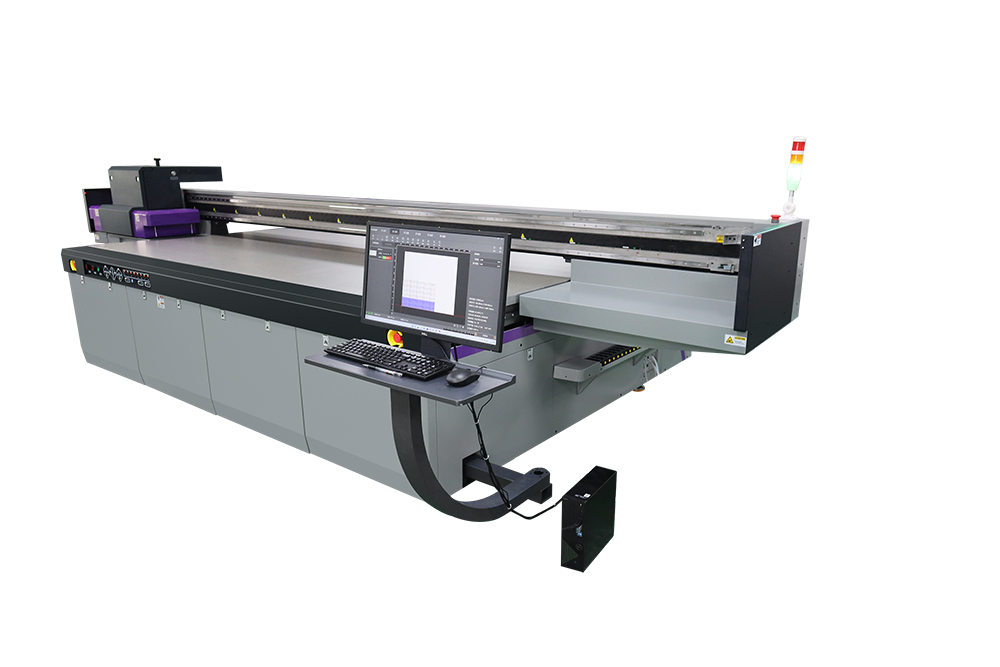How to Prepare Your Files for Printing on a UV Flatbed Printer?
How to Prepare Your Files for Printing on a UV Flatbed Printer?
UV flatbed printers have revolutionized the printing industry, offering unparalleled versatility and precision in reproducing images and designs on various surfaces. From rigid materials like glass, metal, and plastic to flexible ones such as leather and fabric, these printers can handle a wide range of substrates with ease. However, to achieve optimal print quality and ensure a smooth printing process, proper file preparation is crucial. This article outlines the essential steps to prepare your files for printing on a UV flatbed printer.

1. Understand the Printer’s Specifications
Before diving into file preparation, it’s vital to familiarize yourself with the specific capabilities and limitations of your UV flatbed printer. Key specifications to consider include:
Maximum Print Area: Ensure your design fits within the printer’s maximum printable dimensions.
Resolution: Understand the printer’s native resolution to determine the ideal DPI (dots per inch) for your design.
Color Gamut: Familiarize yourself with the printer’s color capabilities to accurately reproduce colors.
File Formats: Check which file formats the printer supports (e.g., PDF, AI, EPS, TIFF, JPEG).
2. Choose the Right File Format
The file format you choose can significantly impact the print quality and the printer’s ability to process your design efficiently. Vector-based formats like PDF, AI, and EPS are preferred for designs with sharp edges and text, as they allow for infinite scaling without loss of quality. Raster-based formats such as TIFF and JPEG are suitable for photographic images but may suffer from pixelation if scaled too large.
3. Set the Correct Resolution
Resolution plays a pivotal role in determining the sharpness and clarity of your printed design. For UV flatbed printers, a resolution of 300 DPI is generally recommended for most applications. This ensures that even the finest details are reproduced accurately. However, for larger prints viewed from a distance, a lower DPI may be acceptable to reduce file size and processing time.
4. Design Considerations
When creating your design, keep the following considerations in mind to optimize it for UV flatbed printing:
Bleed Area: Include a bleed area in your design to ensure that there are no unprinted edges after trimming. Typically, a bleed of 3-5mm is sufficient.
Color Mode: Use CMYK color mode for full-color prints. If your design includes specific Pantone colors, ensure the printer can accurately match them.
Transparency and Overprints: Avoid using transparency effects, as they can lead to unpredictable print results. Instead, flatten all layers and ensure overprints are set correctly.
Text and Fine Lines: Keep text and fine lines at least 0.25pt or thicker to prevent them from disappearing during the printing process.
5. Prepare for White Ink (If Necessary)
UV flatbed printers often use white ink as a base layer for printing on transparent or dark-colored materials. If your design requires white ink:
Ensure your design file includes a separate white ink layer.
Use a vector-based file format to maintain the sharpness of white ink lines.
Consider the opacity of white ink when designing, as it may not fully cover dark substrates in a single pass.
6. Check for Printability Issues
Before finalizing your design, perform a thorough check for any potential printability issues:
Font Embedding: Ensure all fonts are embedded in your file to prevent font substitution during printing.
Image Resolution: Check that all images within your design meet the minimum resolution requirement.
File Size: Large file sizes can slow down the printing process. Optimize your design to reduce file size without compromising quality.
Print Test: If possible, print a test version of your design on the UV flatbed printer to identify any issues before the final print.
7. Convert to the Printer’s Preferred Format
Once your design is finalized, convert it to the printer’s preferred file format. This step ensures compatibility and minimizes the risk of errors during the printing process. Use professional design software like Adobe Illustrator or Photoshop to convert your files, as they offer more control over file settings.
8. Communicate with the Printer Operator
Effective communication with the printer operator is crucial for a successful print job. Provide them with detailed instructions, including any specific color matching requirements, preferred print settings, and any areas of concern in your design. This collaboration ensures that the operator can make necessary adjustments to achieve the desired print quality.
9. Perform a Final Quality Check
Before sending your files to the printer, perform a final quality check to ensure everything is in order. Check for any remaining design issues, confirm that all layers are correctly aligned, and ensure that the file resolution and color mode are set correctly.
10. Backup and Archive
Once your files are ready for printing, make sure to back them up and archive them properly. This ensures that you have a copy of the final design files in case any changes need to be made in the future.
Conclusion
Preparing your files for printing on a UV flatbed printer requires attention to detail and a thorough understanding of the printer’s capabilities. By following the steps outlined in this article, you can ensure that your designs are optimized for printing, resulting in high-quality prints that meet your expectations. Remember, effective communication with the printer operator and thorough quality checks are key to achieving successful print outcomes. With proper file preparation, you can unlock the full potential of UV flatbed printing and bring your creative visions to life.
